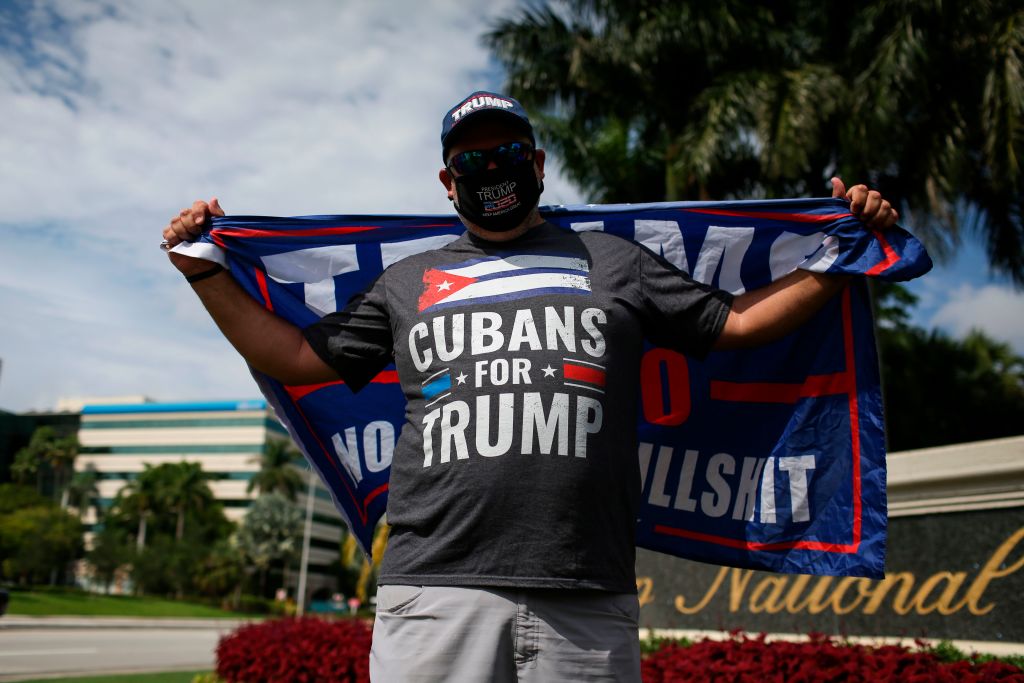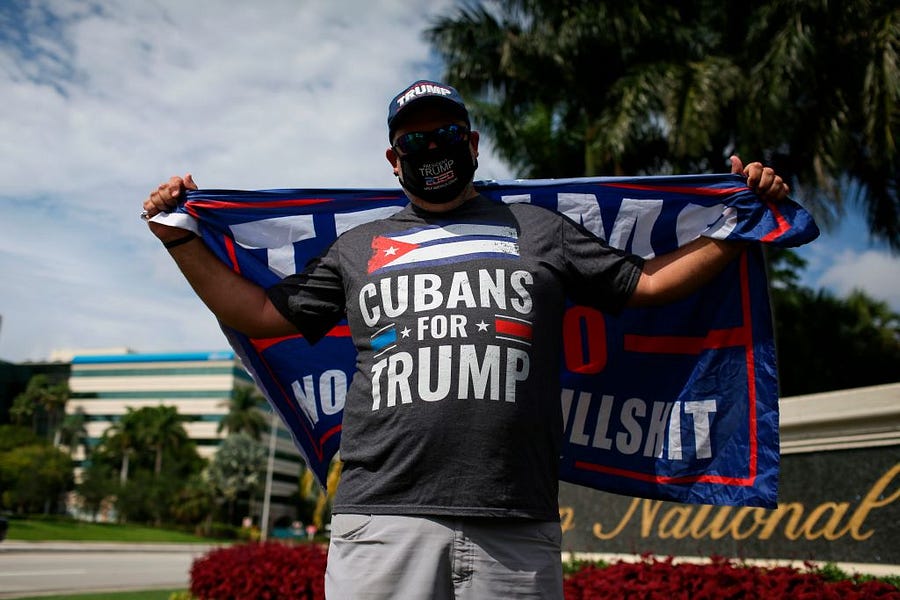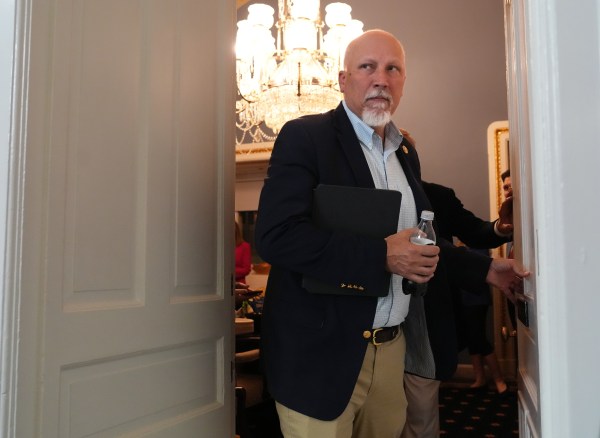Campaign Quick Hits
Winning a debate 30 seconds at a time: The debate Tuesday night is not about the audience watching it live—nearly all of whom will be high information voters who have made up their minds. This is a “social media debate” in which each campaign will be looking for snippets to clip, package, and push on their social media channels to reach low information voters. The Biden team says it will be manning three online spin rooms—one to push content through their social media channels, one to feed content to their “influencer” supporters, and another to work with progressive social media pages. So there won’t be a traditional “winner” or “loser” of the debate as a whole, but even so we hope you’ll join us for a special Dispatch Live Post-Debate Happy Fun Time with me, Jonah, David, and Steve.
Count early, count often: As litigation heats up in a lot of these swing states, here’s a great reference guide for which states can start counting their absentee ballots before Election Day.. Florida—despite all the jokes—has actually been one of the best states for quick results because they start counting those early votes 22 days in advance. So we could get a good chunk of Florida’s results as soon as their polls close at 7 p.m. Pennsylvania, on the other hand, is still haggling over whether it can start counting early, but as of now, officials in Pennsylvania, Michigan, and Wisconsin can’t touch those ballots until election day is underway.
Mail ballots got 99 problems: Axios had a great summary of just how much is going wrong with mail ballots across the country as states scramble to ramp up their systems to meet voter demand. First, there’s the ongoing litigation that leaves a lot of uncertainty for officials and voters. For example, in Pennsylvania, litigation continues over “naked ballots” to determine whether mailed ballots that are not sealed in a secrecy envelope may be counted. Then there’s user error. One study in Florida found that “voters are twice as likely to have their absentee ballot rejected if they’ve never voted that way before.” And then there’s the disparate impact of those rejections. A study in North Carolina found that “new, younger, Black and Hispanic voters are more likely to have their ballots rejected” with black voters’ ballots “rejected at more than four times the rate of white voters.” Lastly, there’s the overall effect of such a huge increase of mailed ballots. NPR estimated that “more than 550k mail-in ballots were rejected during the presidential primaries this year.”
More polls to ignore: We’ve seen lots of polls this week purporting to show that voters don’t want the Supreme Court seat filled before the election. This one: “Almost half (49%) of registered voters believe that the Senate should not confirm Amy Coney Barrett to the Supreme Court before the results of the presidential election are known.” And this one: “Majorities of likely voters in Michigan and Wisconsin say the winner of the 2020 presidential election should get to fill the U.S. Supreme Court seat left vacant after the death of Justice Ruth Bader Ginsburg.” This one, too: “A clear majority of voters believes the winner of the presidential election should fill the Supreme Court seat.” But there are two big problems with these polls. First, when broken down by party affiliation, those numbers aren’t nearly as interesting. The vast majority of Republicans want Trump to fill the seat and the vast majority of Democrats don’t. And second, and most important, they don’t tell us whether that preference will change their vote, which is the only question that matters. Remember, at this point, the race is all about turnout. Good polls now are finding “no serious evidence that the Supreme Court vacancy has affected the race for the White House.”
Transubstantiation of votes: Catholics have backed the winner of nearly every presidential election for decades, flipping between parties to do so. In 2016, Pew found that Trump won Catholics by 8 points. This time around, facing a Catholic opponent, Trump’s support is flagging. EWTN News/RealClear Opinion released a survey this week that found Biden up 12 points with Catholic voters. And Biden leads with Catholics—albeit more narrowly—in state polls as well, according to surveys by NBC/Marist in Pennsylvania and the Marquette University Law School in Wisconsin where Catholics make up about 25 percent of the likely electorate.
Cash money: We finally got the FEC reports from August after the initial round of headlines in which the Biden team spanked Trump’s campaign in fundraising by over $150 million for the month. Now, with the overall cash-on-hand numbers available, the difference is even more stark: The Biden team has more money coming in the door and more money in the bank all while spending more money than the Trump campaign. Combining their totals with the national party committees, Trump and the Republican National Committee are behind by more than $140 million with “$325 million cash on hand, compared to the $466 million Biden and the Democratic National Committee enjoy.” And the Biden campaign was outspending the Trump team 2-to-1 during that time. But when we’re talking about this much money, does the marginal dollar even matter anymore or do both campaigns have more than enough? Yes and no. With so few actually undecided voters around, television and expensive ad campaigns probably won’t be as relevant. But on the other hand, this cycle will put a lot more focus on absentee ballot programs and legal departments which need lots of boots on the ground and can bleed money quickly.
Idle hands are the incumbent’s workshop: The unemployment rates in Pennsylvania, Michigan, and Ohio were all higher than the national average in August, according to the most recently available numbers. As the economic recovery from the pandemic continues to progress and voters continue to say it is the most important issue, some states are in far better shape than others. Arizona and Georgia both had unemployment rates below 6 percent; Pennsylvania’s is over 10 percent. Most polls still show Trump with a nearly 10-point lead over Biden on the economy and show a majority of voters approve of Trump’s handling of the economy.
We’re reliable with the ladies: I’ve written before about how the gender gap is starting to overtake even race or age as a predictor of voting behavior—especially if you look at the youngest cohort of voters. For example, Harvard’s Institute of Politics, which regularly polls young voters, found a staggering 51-point difference in Trump’s approval among rural Latino men and women across eight battleground states. But check out these numbers from the latest NBC/Wall Street Journal poll: Biden now leads Trump by “51 points (72 percent to 21 percent) among women under 40.” Young men, on the other hand, break about evenly for the two candidates.
Come on baby, light my firewall: Trump’s team has argued that they don’t need Florida to win on November 3. The last time a Republican presidential candidate won without Florida? Silent Cal in 1924. In a briefing last week, Trump advisers told reporters that they can also lose Arizona or North Carolina and still keep the White House if they win Pennsylvania, Michigan, Wisconsin, AND Minnesota. And while that all may be true as a technical matter, it’s hard to imagine a world in which Trump loses Florida but picks up Minnesota. As of today, it is dramatically more likely that we would have a 269-269 split (Trump wins Florida, Arizona, Wisconsin, North Carolina; Biden wins Michigan, Pennsylvania, Minnesota) than Trump winning without Florida or North Carolina. Speaking of which …
Partly Cloudy in the Sunshine State

Andrew Egger, craving oranges and sandy beaches, dug in on Trump’s Florida firewall this week to tell us rumors of his demise there may be exaggerated—perhaps for an unexpected reason:
Ever since we started this newsletter, we’ve been telling you to expect the presidential race to tighten in the closing months as voters come home to their corners. With a little more than a month to go (!!) until Election Day, we’re starting to see some real evidence of that tightening taking place. Let’s take a quick look at the state where this phenomenon looks most significant at the moment: Florida.
Florida is a state Donald Trump narrowly won in 2016. It’s a state that narrowly elected a Republican governor and a new Republican senator in 2018. But for most of the summer, Florida didn’t look like the slightly GOP-leaning swing state it’s been in recent years. Biden was cleaning up in the polls through June and July, with poll after poll showing him with an advantage of five to ten points over Trump.
Since August, however, that lead has tightened dramatically. Here are the results of the five most recent nonpartisan Florida polls courtesy of RealClearPolitics: Tie, Tie, Biden +2, Biden +3, Trump +4. That last, which was conducted by ABC News and the Washington Post, is Trump’s first lead in a non-GOP Florida poll since March. It’s an outlier, but the trend is plain: Florida is a genuine toss-up state going into October.
What’s particularly interesting is what seems to be driving this trend. A number of recent polls have shown Trump making serious inroads among a seemingly unlikely demographic: Florida Hispanics.
In 2016, Hillary Clinton lost Florida despite picking up about two-thirds of the Latino vote. Biden’s summer surge, meanwhile, was largely attributable to his picking off white suburbanites and—in particular—senior citizens, who more than any other voting bloc have shown themselves to be disillusioned by Trump’s handling of the coronavirus pandemic. If he’d held onto Hillary-like Latino numbers as well, you could probably stick a fork in Florida.
But according to current polling, he hasn’t. While Biden is still leading among Hispanics in most polls, his margin over Trump with that demographic has shrunk. Ethnic cross tabs of polls are more erratic than topline results, with a higher margin for error, since focusing on one particular population within a given poll dramatically lowers the sample size of the data set you’re examining. But the latest polls show Hispanic voters anywhere between favoring Biden by 15 points to actually favoring Trump by 4. Either outcome in November would represent significant gains by Trump here since 2016.
The simplest factor to explain this shift is Florida’s outsize population of Cuban Americans, whose fierce distaste for socialism has historically accounted for their Republican lean and this year has dovetailed with Trump making anti-socialism a central messaging plank of his campaign.
But that doesn’t tell the full story, because Trump has been making slow but steady gains among Latinos not just in Cuban-immigration-heavy Florida, but across the U.S. So what accounts for this? To answer this, let’s take a closer look at the Trump campaign’s political messaging.
Not to belabor the obvious, but the campaign Trump ran in 2016 could accurately be described as “Latino-hostile.” He burst onto the presidential scene with a speech lambasting illegal immigrants from Mexico as drug-mule criminal rapists. He insisted a Hispanic judge couldn’t fairly adjudicate a case that involved him because of his heritage.
The same was true during his first two years in office. The biggest political controversy of 2018 was the Trump administration’s “zero tolerance” immigration policy that led to the forced separations of thousands of parents and children at the southern border. His closing argument in the 2018 midterms was rabble-rousing about migrant caravans.
Since then, however, a subtle rhetorical change has come over the president. He still talks about illegal immigration in passing at rallies, but it’s no longer a central part of his campaign pitch. This year, that issue has been supplanted by a different fire-up-the-base issue: the “law and order” response to urban unrest at protests following the death of George Floyd this year.
This issue, which Trump has been hitting nonstop for months, is one where there’s evidence he’s closer to where the majority of Hispanic voters are than you might think. In a recent New York Times poll of four battleground states, majorities of Hispanic respondents said that Biden had not done enough to condemn rioting and that they opposed efforts to cut funding to police. Another Times survey asked 15 focus groups how convincing they found a GOP message that called for “fully funding the police, so our communities are not threatened by people who refuse to follow our laws.” More Hispanics than white respondents responded positively to the message.
Checking In With Florida Man
To go deeper on these issues, Audrey Fahlberg from our team spoke with Whit Ayres, a prominent Republican pollster, and head of North Star Opinion Research, who literally wrote the book on Republicans and the country’s changing demographics. Here’s what she learned …
Audrey: You wrote about the GOP’s struggle to adapt to America’s demographic trends before the 2016 election in your book, 2016 and Beyond: How Republicans Can Elect a President in the New America. Do you believe the Republican Party can compete for the Latino vote?
Whit: The theme of 2016 and Beyond is that the country is changing dramatically and that to be competitive in the long run, the Republican Party needs to adapt to those changes rather than fight them. The book argues that basic principles of the Republican Party—such as belief in free markets, devotion to individual liberty, the importance of families, and the idea that progress comes from individual initiative in growing businesses that need to be protected from too much government intrusion—are principles that can apply across ethnic boundaries.
Those are universal principles that all human beings respond to, and there is no reason why fundamental principles that the Republican Party has traditionally held need to be limited by race, or region, or age, or ethnicity.
Audrey: Joe Biden is still carrying the Latino vote nationwide, but three polls from last week show Trump is now leading with Hispanics in Florida. Do you find this trend surprising?
Whit: Florida Hispanics have always been different from Hispanics in many other states because of the large proportion of Cubans who are generally far more conservative because they fled communism. There are also a number of Latinos in South Florida who fled dictatorships in Latin America, like Venezuela. So they are going to be more predisposed to a Republican philosophy. The basic outline of Hispanic voters nationally is that about half are pretty strong Democrats, about a quarter are pretty strong Republicans—primarily Cubans—and the final quarter are up for grabs.
Good, aggressive Republican candidates—and there are many, but George W. Bush is probably the most famous—have reached out aggressively and done very well in that final quarter of the Hispanic population that’s not locked into one party or the other. George W. Bush won 44 percent of the Hispanic vote nationally in his re-election campaign in 2004. He won a majority of the Hispanic vote in the Sun Belt in 2004. But many other Republican candidates, particularly those in Florida and Texas—Rubio comes to mind—have done very well in the Hispanic community.
You don’t have to win a majority of Hispanic votes in order to tip the balance of elections in places like Florida and Texas—and increasingly Arizona, North Carolina, Georgia, and Nevada—and there will be many other states in that category over time. George W. Bush set the standard, though. He reached out aggressively to campaign in Latino communities, he was very open to concerns of the Latino community. He spoke a version of Spanish—sort of like he spoke a version of English—and he set the standard for how a Republican can without violating their principles come close to winning a majority of Hispanic vote.
Audrey: My understanding is that first-generation Hispanic voters are much more likely to speak Spanish, feel connected to their country of origin, and live in predominantly Hispanic neighborhoods, but recent polling over the past few years suggests that these trends are much less pervasive in later generations. The rate of interracial marriage is growing, as is the the increasingly blurred line between ethnic and racial identity. How will these trends continue to affect voting behavior in the years to come?
Whit: It’s a fascinating trend and a compelling point. We may not have such clear distinctions between “white” and “African American” and “Latino” as we go forward into the 21st century. My wife is Italian and she has explained to me that when her ancestors first came to America a couple of generations ago, Italians were not really considered white by descendants of Northern Europeans. But they certainly are now. And it goes to show that our racial categories are constantly being redefined and that we may not have the sort of sharp racial distinctions in the future that we’ve had in the past.
Audrey: On the one hand, I’ve heard liberals argue that Trump’s hardline immigration stance and often distasteful rhetoric about immigrants will depress his support with Hispanic voters. But I’ve also heard conservatives argue that Hispanic voters are socially conservative on issues like abortion. Are Hispanic voters going to be open to voting Republican in 2020?
Whit: I believe it was Ronald Reagan who said “Hispanics are Republicans, they just don’t know it yet.” And what he meant by that was that the strongly religious element in the Hispanic community and conservatism on issues like abortion made them far more open to the Republican Party as traditionally defined than people appreciated. Reagan was always one who was more devoted to winning new converts than driving out heretics and Hispanics were one of the groups that he had in mind.
Photograph by Marco Bello/AFP/Getty Images.








Please note that we at The Dispatch hold ourselves, our work, and our commenters to a higher standard than other places on the internet. We welcome comments that foster genuine debate or discussion—including comments critical of us or our work—but responses that include ad hominem attacks on fellow Dispatch members or are intended to stoke fear and anger may be moderated.
With your membership, you only have the ability to comment on The Morning Dispatch articles. Consider upgrading to join the conversation everywhere.